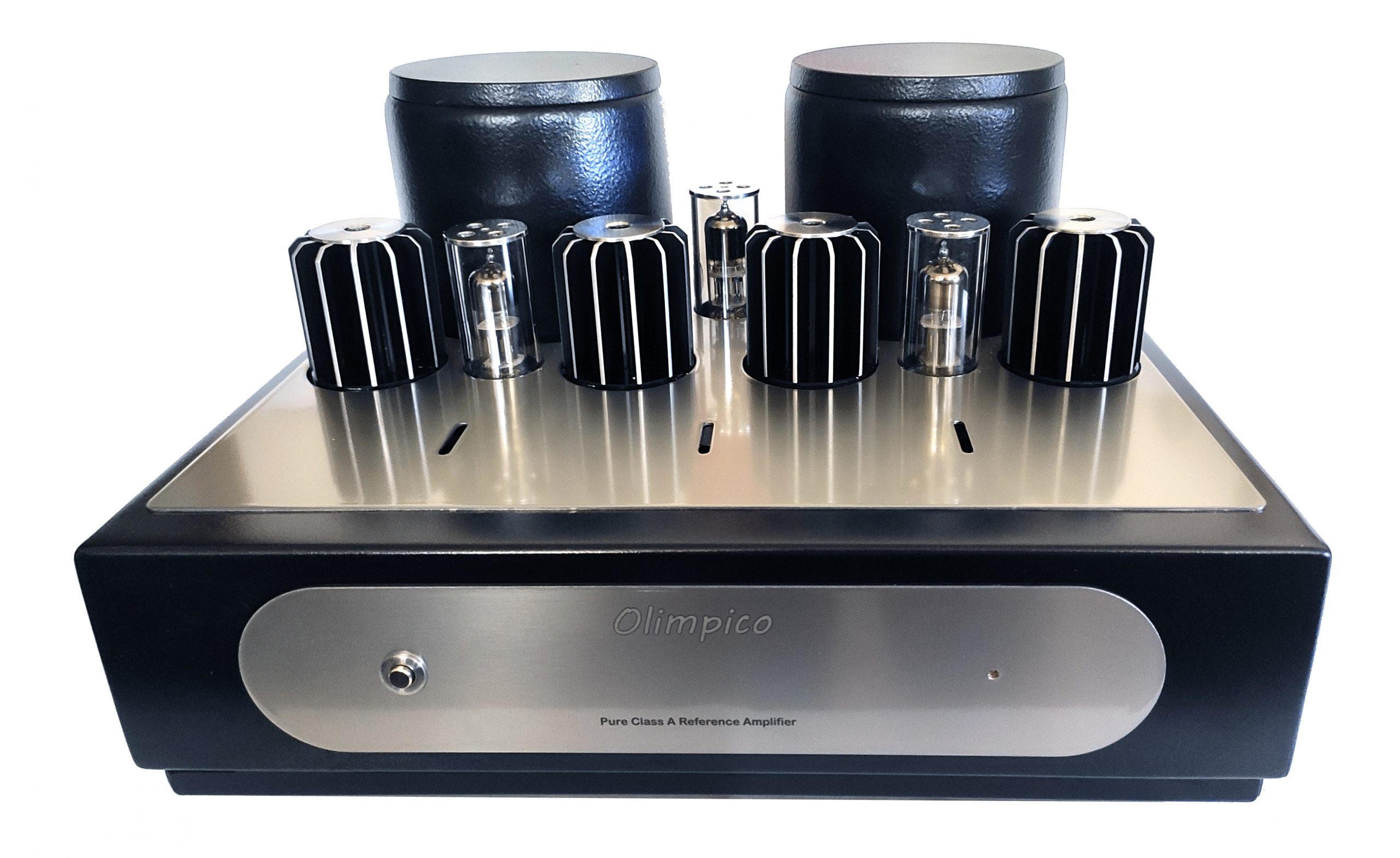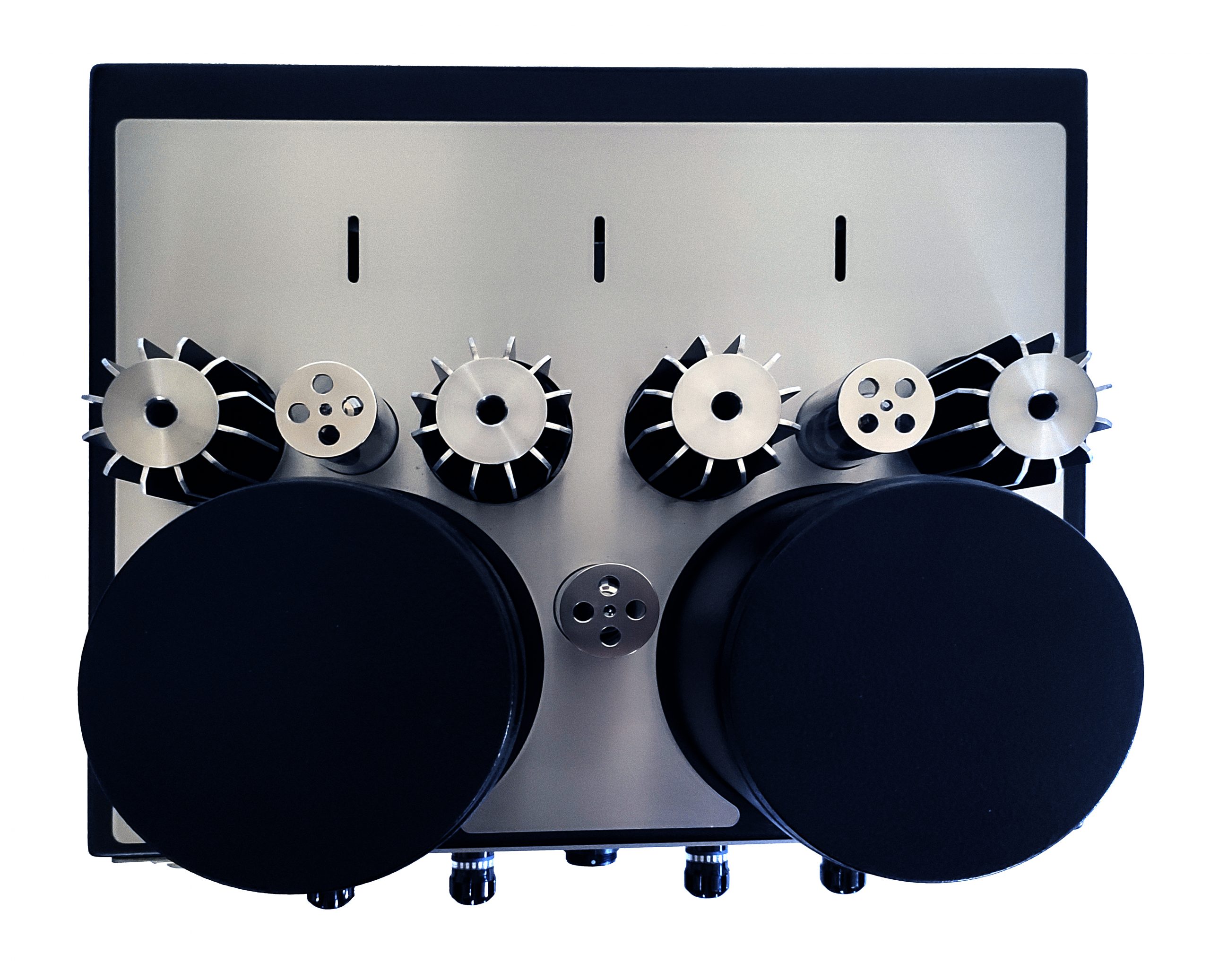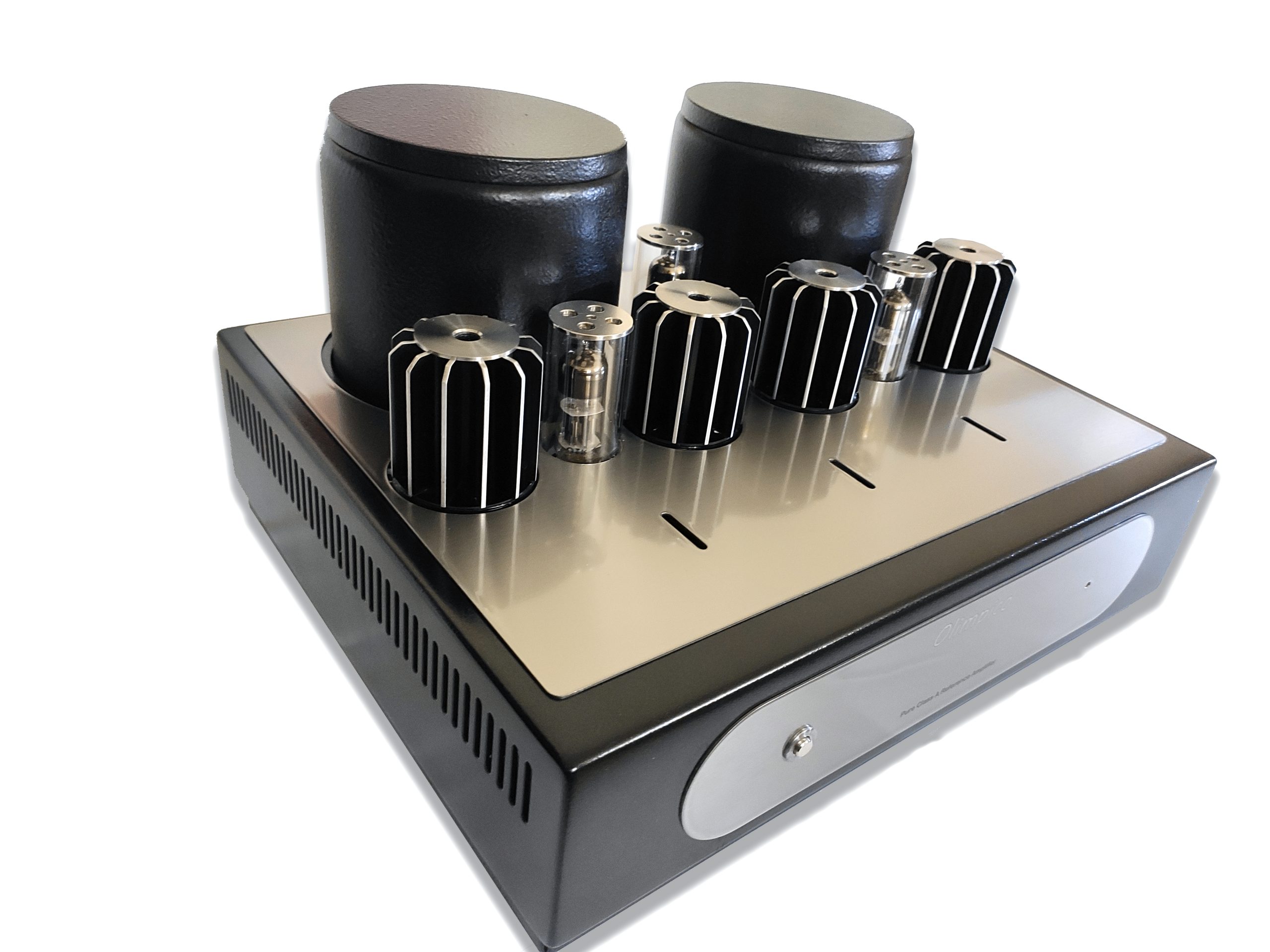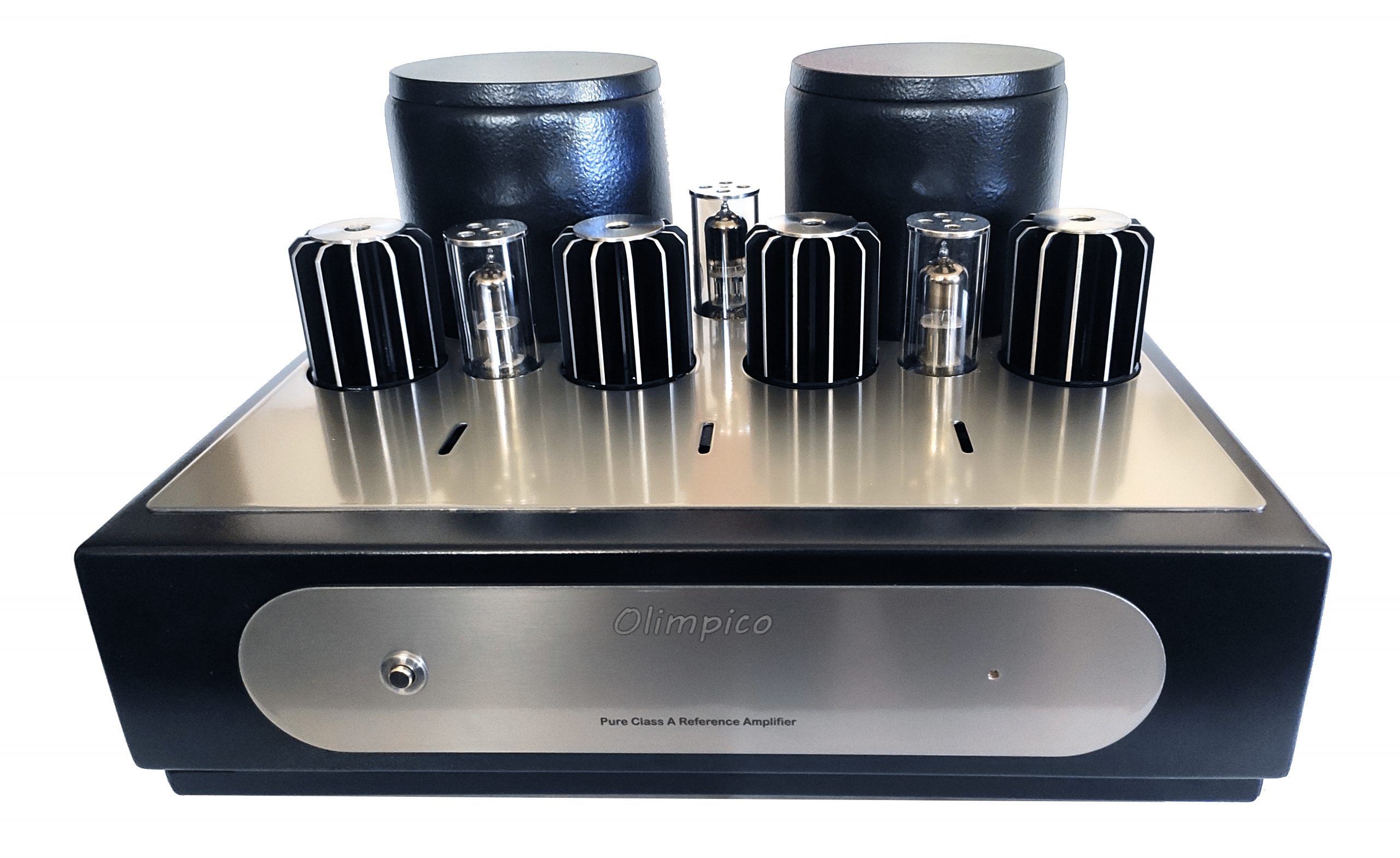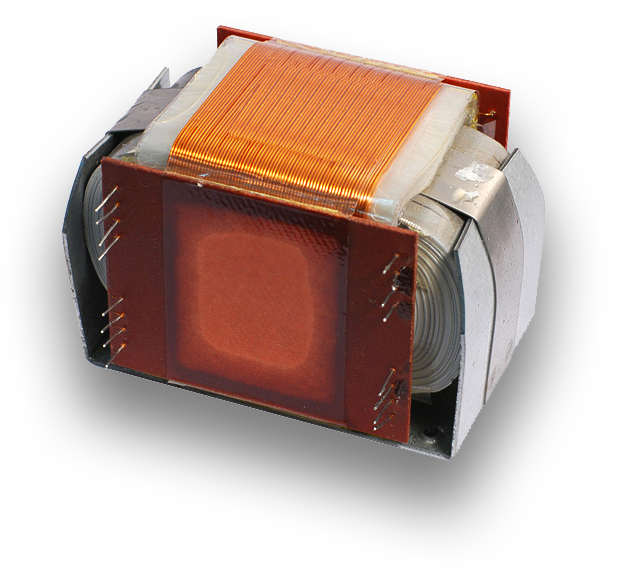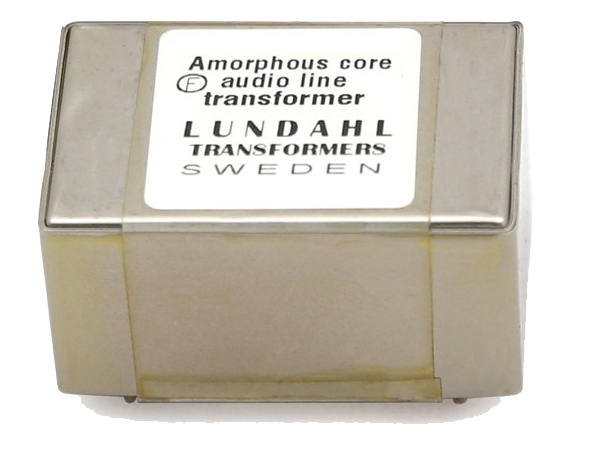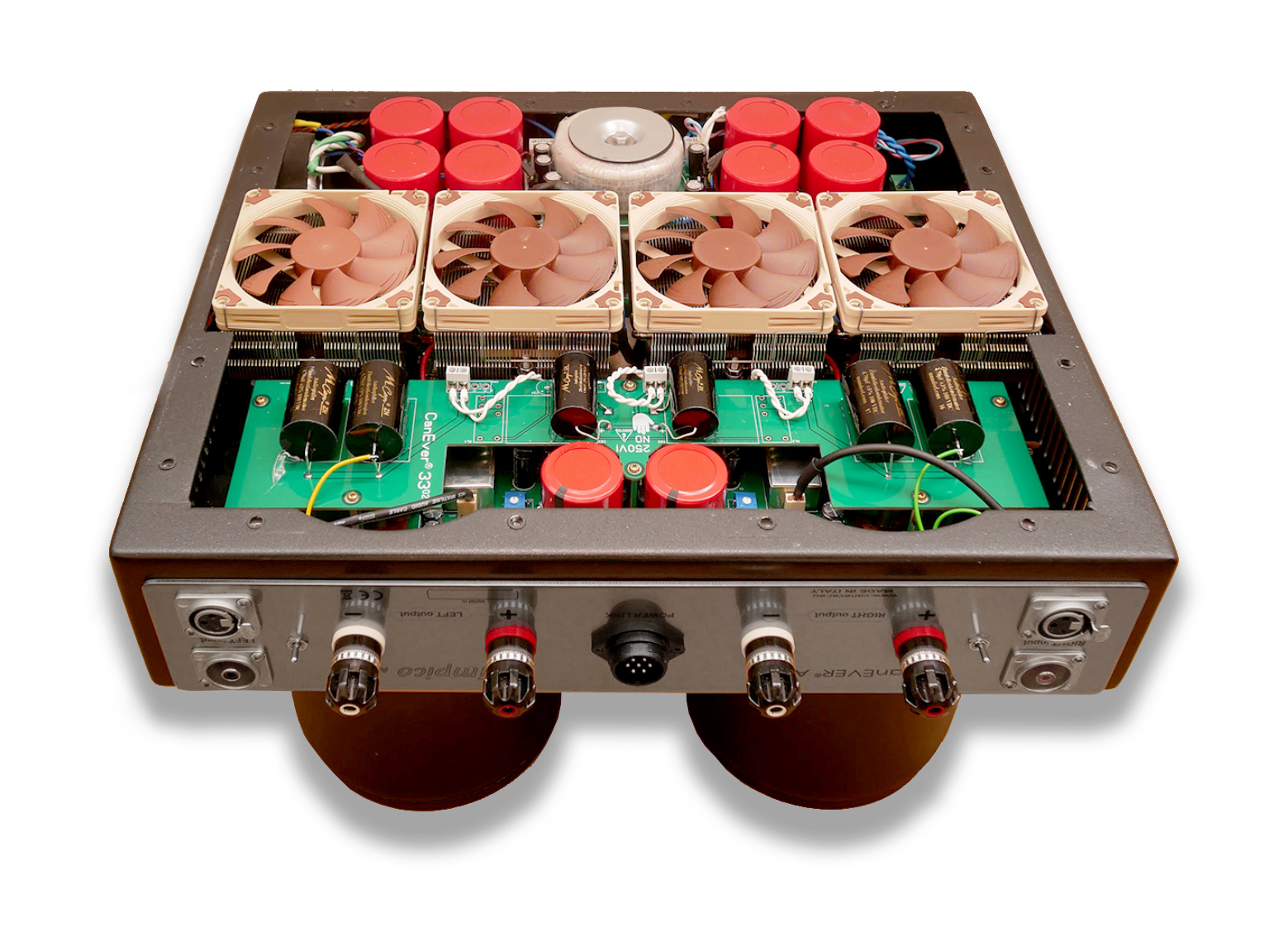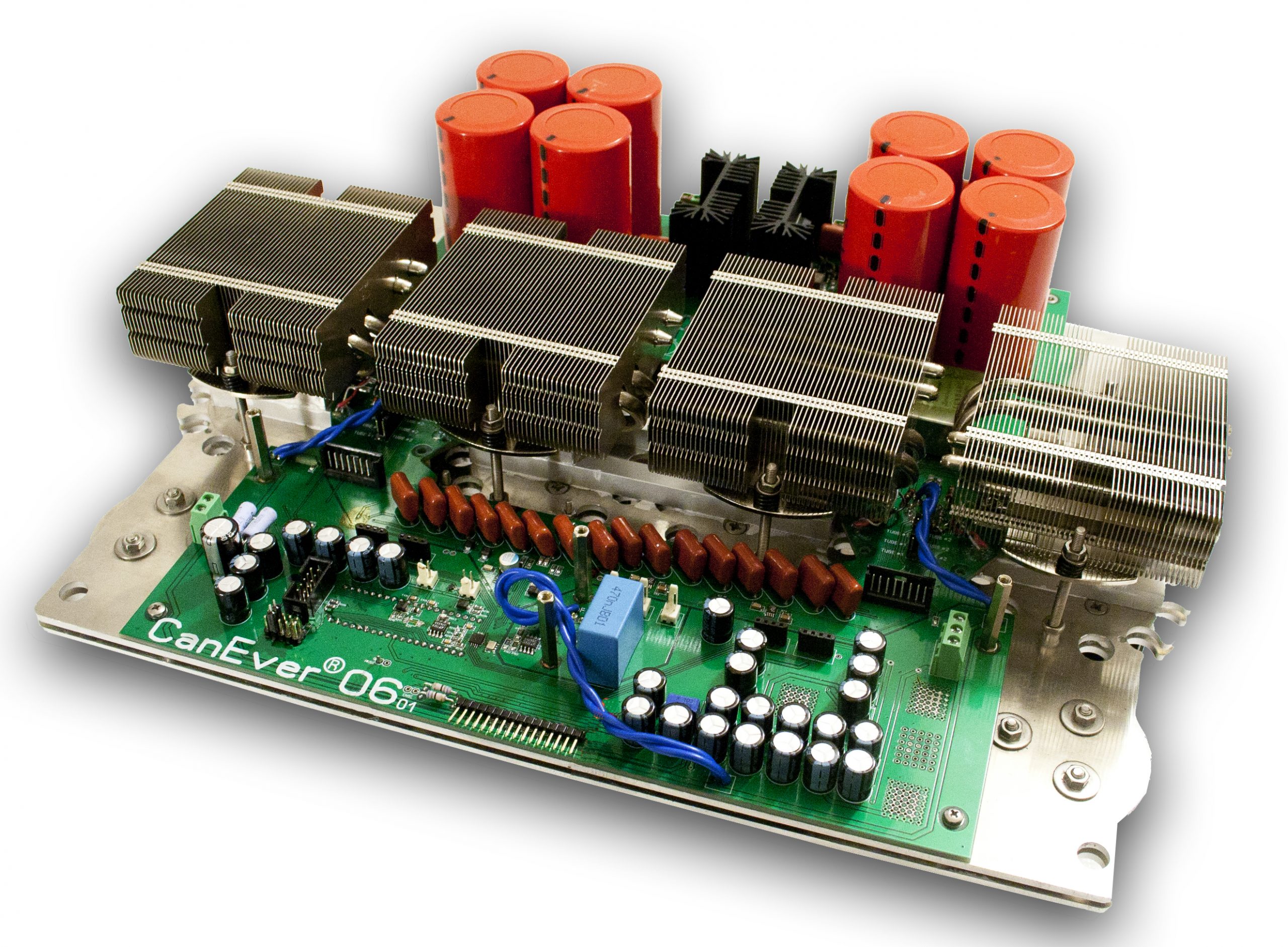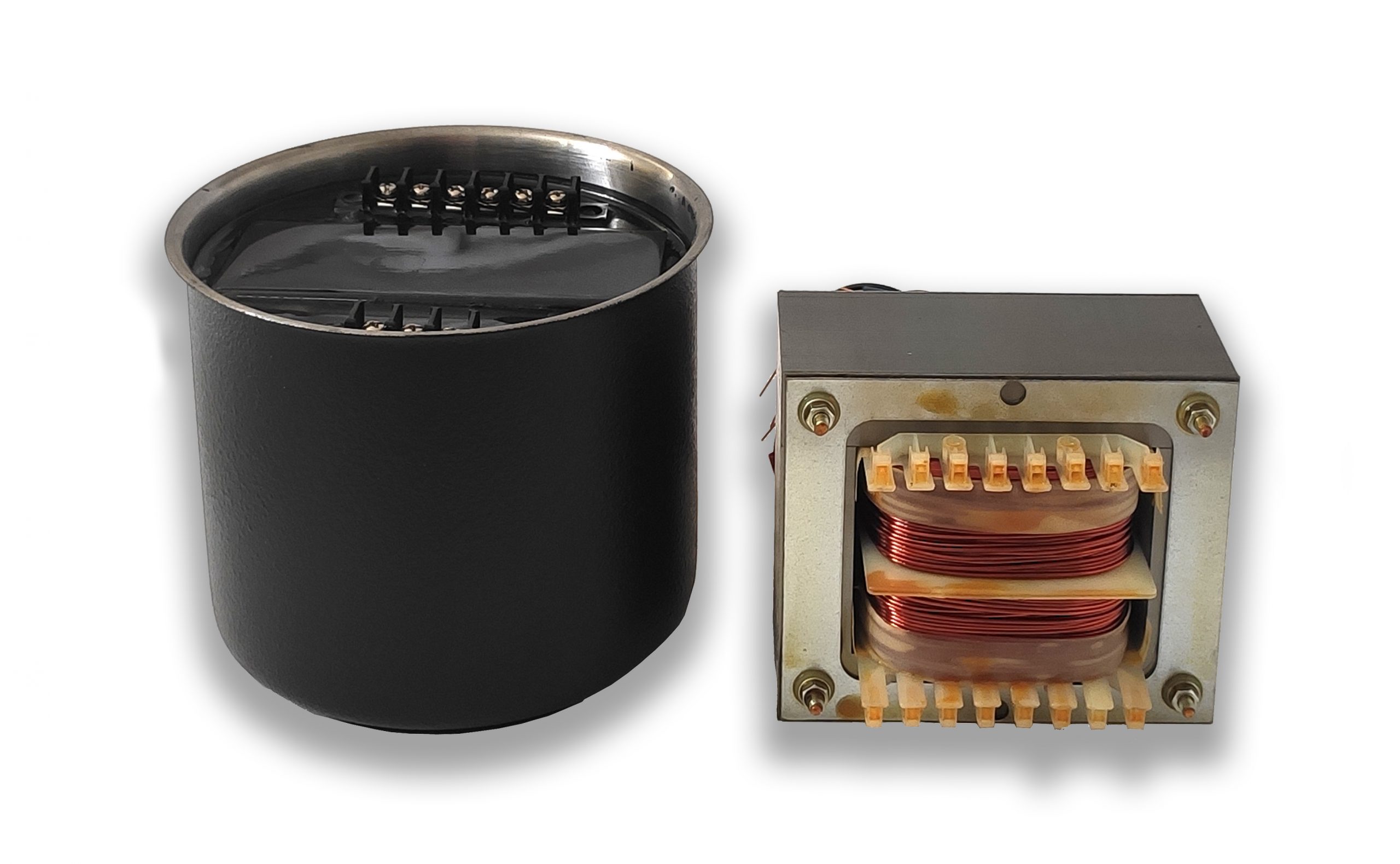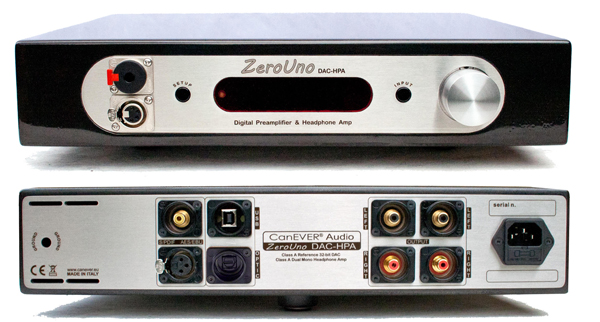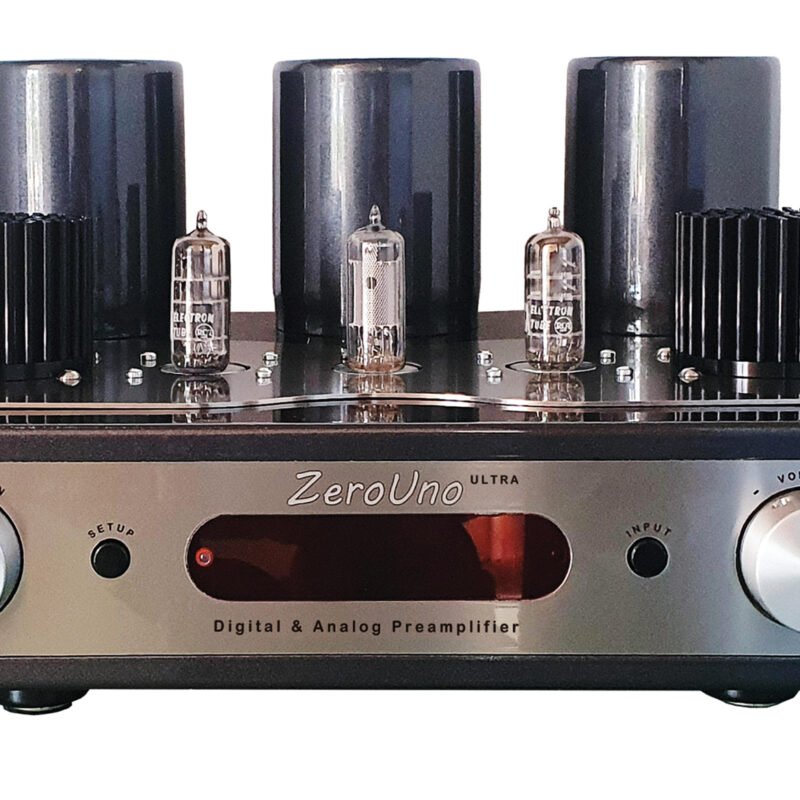Description
The “perfect” amplifier is basically impossible to design, but with the required engineering skills gained from a strong background in vintage amplifier design AND a deep knowledge of recently developed components, as well as modern circuits, it is possible to get very close to an amplifier which works almost perfectly.
CanEVER Audio, with its smart engineering approach, has already proven that introducing highly competitive products in the overcrowded market of High-End Audio is possible. The ZeroUno DAC, introduced in 2016 and the ZeroUno PLUS, shown for the first time at the High End Show in Munich 2017, are perfect examples of this. Both products are a combination of a high-quality DAC including full MQA decoding and a preamp, with an intricately designed tube output-stage working as a current source! While the ZeroUno DAC is a preamp accepting input from digital sources only, the ZeroUno PLUS comes with a top class analog preamp built in, in addition to the ZeroUno DAC circuit.
The CanEVER Audio Olimpico PowerAmp is one of the few audio amplifier designs, that follows the most important and updated results in audio amplifiers research. It is the result of over 30 years of research and experience gathered in the design and building of amplifiers based on single ended, push-pull and hybrid circuits, using tubes and/or transistors.
First of all: the CanEVER Audio Olimpico PowerAmp is a TRIODE VOLTAGE AMPLIFIER followed by a MOSFET CURRENT STAGE!
Why is this important?
The triode voltage amplifier is responsible for the voltage swing and the damping of the signal at the output. Since the MOSFET current buffer is responsible for the interaction with the loudspeaker impedance, the loudspeaker doesn’t load directly the triode stage. Thus, the triode stage is loaded with the very high impedance of the MOSFET buffer, preserving the sound quality in its entirety.
To design the “perfect” amplifier, it is important to understand how the load connected to the amp works. The load of an audio amplifier is a loudspeaker. Each driver inside a loudspeaker follows the laws of physics – not some “creative ideas”. These laws of physics “instruct” any type of speaker / driver to act directly proportional to the CURRENT of the applied input signal, or, as a complex function of the VOLTAGE of the applied input signal. The CURRENT mode is the natural working way because it is proportional, intrinsically linear.
How does this affect the sound of my loudspeaker?
It is of paramount importance to understand that a loudspeaker does NOT represent a pure resistive load to the connected amplifier but it is In fact a complex load called IMPEDANCE. This impedance is dramatically irregular, with maximum and minimum amplitude (ohms) along the band of frequencies that the loudspeaker is radiating.
Once the VOLTAGE output of an audio amplifier is proportional to the input signal, coming from the various audio sources in an audio system, the VOLTAGE has to be “converted” into CURRENT in order to drive the speaker. A classic VOLTAGE amplifier uses the IMPEDANCE of the loudspeaker to do this. But the IMPEDANCE CURVE (impedance vs. frequency) of the loudspeaker strongly influences this “conversion”. Especially when this impedance becomes very low. In many modern speakers, the impedance can get as low as 2 Ohms!
Even for a non-engineer, it is easy to understand that under these conditions, the movement of the loudspeaker cone will become “corrupted”. The result is ALWAYS a colored sound radiated from the speaker. There is no way out!
This situation changes completely, if the loudspeaker is driven by current!
In this case, the output CURRENT of the amp is directly proportional to that of its input signal and makes the cones of the speakers move in direct proportion to that applied CURRENT. The cone is moving proportionally to the original audio input signal, no matter what crazy “roller coaster” function its impedance curve is riding.
The result is a clean sound representing the original audio signal and not “modulated” by the impedance of the loudspeaker.
There is only ONE correct implementation of an audio amplifier and this is an amplifier with a CURRENT OUTPUT. One of the very rare amplifiers on the market today following this design principle is the CanEVER Audio Olimpico PowerAmp!
In the initial design phase of a power amplifier, choosing which type of audio circuit to implement is one of the most important and basic decisions that needs to be made. For CanEVER Audio, it was clear from the beginning: Class A mode was essential in order for the sound of the amp to be as natural as possible. To reach a clean sound – free from any distortions – the decision to use a fully symmetric design was the only way to go.
Other important aspects of the Olimpico PowerAmp design are the absence of coupling capacitors in the signal path as well as any kind of feedback loops.
